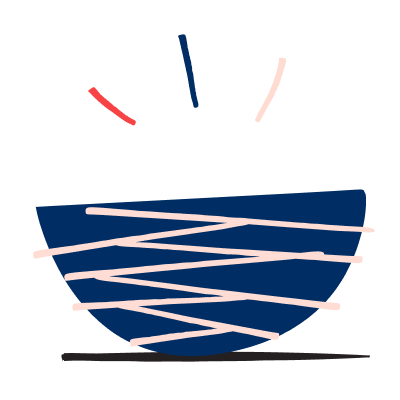Your cart is empty. Let's fix that!

Iron is essential for our bodies, yet low iron is one of the most common nutritional deficiencies. Low iron levels can leave you feeling physically tired and weak, impair mental function, and weaken your immune system.
Iron supports growing minds and bodies. It is needed to make red blood cells to carry oxygen to the body and the brain. Without it, the brain, organs, and tissues won’t get enough oxygen to support growth and development. Proper iron levels support learning and memory, attention span, and energy.
Iron is essential but there are particular lifestages when it’s especially important. The risk for iron deficiency is highest for young women of childbearing age due to blood loss during menstruation. Iron demands are also higher for pregnant women and for newborns, infants, and toddlers due to their growing bodies.
During pregnancy, blood volume expands to support the growth and development of a baby. This takes a lot of red blood cells, and iron helps provide extra support for red blood cell production (1), attention span (2), and your body’s immune response. These higher iron demands make the risk of iron deficiency much higher.
The same healthy dietary sources you rely on for iron at any time of life are especially important during pregnancy and provide many other nutrients as well. Prenatal multivitamins may also contain iron. Our Mama Bird Prenatal Multi+ contains 18 mg. If you need additional iron, Liquid Iron is a great liquid iron supplement.
Infants and children under the age of two years old also have a higher risk of iron deficiency because this rapid-growth lifestage demands increased iron. It is important they get enough iron in their diet or with supplementation.
For the first 4 to 6 months, breastfed babies are able to absorb iron from breast milk. When a baby begins to eat solids — typically between ages 4 months and 6 months — give them iron-rich foods such as pureed meats, lentils, and dark leafy greens. See the 10 Top Iron-Rich Foods list below.
Vitamin C helps with the absorption of non-heme iron, the form found in plant-based foods. Try pairing your child’s iron-rich foods with vitamin C-rich foods, such as guava, citrus fruits, papaya, broccoli, or bell peppers.
Numerous studies have shown the negative effects of iron deficiency during the first years of life are particularly concerning (3). A report published in Proceedings of the National Academy of Sciences discusses that even healthy young adults can have variations in brain structure integrity in correlation with variations in iron levels (4). It’s good to know the symptoms of low iron and there are some clear signs to watch for.
The best way to make sure you’re not lacking in this key nutrient is to eat adequate amounts of iron-rich foods each and every day.

It’s important to know that dietary iron comes in two forms: heme and non-heme. Meat, poultry, fish, and seafood are all major sources of heme iron.
Non-heme iron is found in plants and grains. So if you are vegan or vegetarian, getting iron through food is fairly easy to do since many foods included in these diets are naturally iron-rich. Beans, lentils, and dark leafy greens are all delicious ways to incorporate iron. Cooking in cast iron cookware can also boost iron consumption. One thing to be aware of, however, is that on-heme iron tends not to absorb as readily as heme iron. Since vitamin C helps with iron absorption, include foods rich in vitamin C along with foods that supply iron. Here’s a list of some great dietary sources of iron, including dark chocolate!
If food sources are not enough and/or you need extra supplementation, Best Nest Wellness makes a Liquid Iron for both children and adults. It delivers 15 mg of highly bioavailable Albion® Taste-Free iron per dropper. Plus, it’s chocolate flavored and tastes delicious.
Using a liquid iron supplement like Liquid Iron is a perfect way to make sure the entire family is getting the iron they need. It’s a convenient once-daily formula with vegan, high-quality, natural ingredients. Allergen and sugar-alcohol-free, for added peace of mind. And it can be easily mixed into other liquids for variety and ease of use.
Iron can be challenging to absorb. That’s why we designed Liquid Iron with Ferrochel®, a patented chelated iron (iron bisglycinate) that is easily absorbed in the intestine because it does not break down in stomach acid. This makes it easier to tolerate and you get more of what you need without uncomfortable side effects.
How do you know how much iron is too much or too little? It starts with where you are. Ask your healthcare provider to run an iron (ferritin) level test. If you need iron, they can provide guidance for the proper amount
It is possible to overdo it, although generally, our bodies do a good job of helping regulate that. The best thing to do is know your iron levels. Read labels. For those looking to limit iron or who are getting enough iron from iron-specific supplements, we also offer our multivitamins in iron-free variations. Both Women’s Multi+ Iodine & Iron Free and Mama Bird Prenatal Multi+ Iodine & Iron Free provide that option for those sensitive to iron.